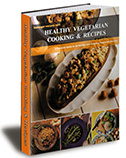Note: This is the last part of a multiple-posts about getting and preparing the best food. Please read the earlier posts to get more information.
Tips on Finding and Preparing the Best Food (part 1)
Tips on Finding and Preparing the Best Food – Vegetables (part 2)
Tips on Finding and Preparing the Best Food – Fruits (part 3)
Tips on Finding and Preparing the Best Food – Meat (part 4)
Tips on Finding and Preparing the Best Food – Poultry (part 5)
Tips on Finding and Preparing the Best Food – Seafood (part 6)
Tips on Finding and Preparing the Best Food – Eggs and Dairy Products (part 7)
The bakery section of the market offers a wide array of white, whole-wheat, rye, pumpernickel, sour-dough, raisin, pita, and assorted-grain breads from which to choose. For the past half century, white bread (made with wheat flour that was milled after the germ and bran were removed) has been the most popular. But whole-grain breads (made with all parts of the grain, including the germ and the bran) have surged in popularity as more emphasis is placed on fiber in the diet.
Whole-grain breads provide the best source of carbohydrates, vitamins, minerals, and fiber. “Wheat,” however, does not always mean whole wheat. Appearance of the loaf alone will not tell the full story. For example, bread that is darker in color may appear to be whole-wheat bread, but it may be made with refined flour to which caramel coloring or molasses is added. Certain brands, advertised as high in fiber, contain wood pulp, sometimes identified on the label as alpha cellulose. The shopper, therefore, should be sure to read the labels on breads closely.
If a family prefers white bread, it should be enriched with some of the nutrients (B vitamins, in particular) that were removed during the refining process. Enriched white bread may contain most of the nutrients found in whole-grain breads, but it will lack the fiber.
Rice is available in many forms and varies greatly in nutritional value. Rice loses nutrients as it is polished from brown rice to white rice. While the protein in polished white rice may be more digestible, some of the protein and many of its B vitamins
and minerals are lost in the process. Parboiled or converted white rice contains less nutrients than ordinary rice but more than instant white rice, which contains less nutrients than all other categories.
For new ideas on cooking delicious and healthy food, visit lowsugar-recipes.com.

[…] unknown wrote an interesting post today onHere’s a quick excerptWhole-grain breads provide the best source of carbohydrates, vitamins, minerals, and fiber. “Wheat,†however, does not always mean whole wheat. Appearance of the loaf alone will not tell the full story. For example, bread that is darker … […]